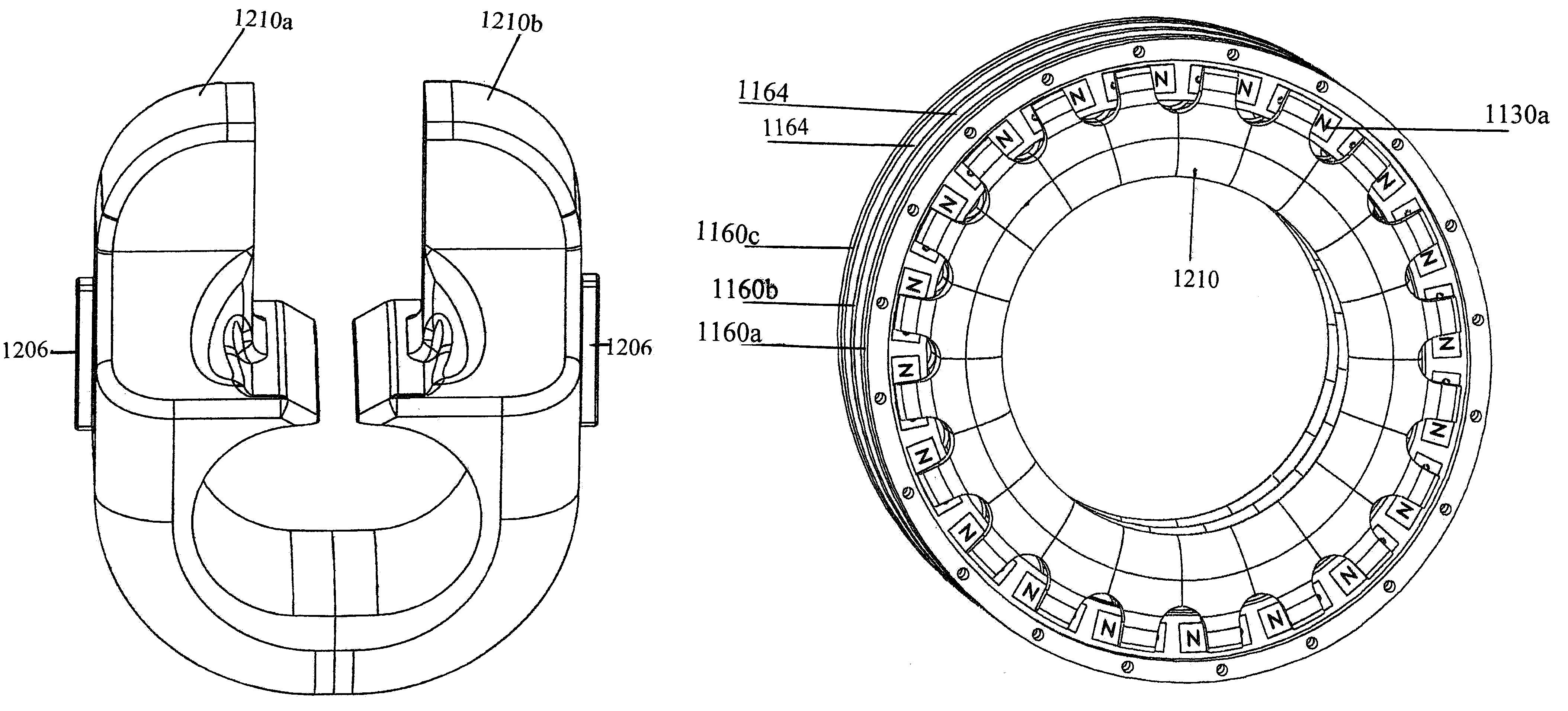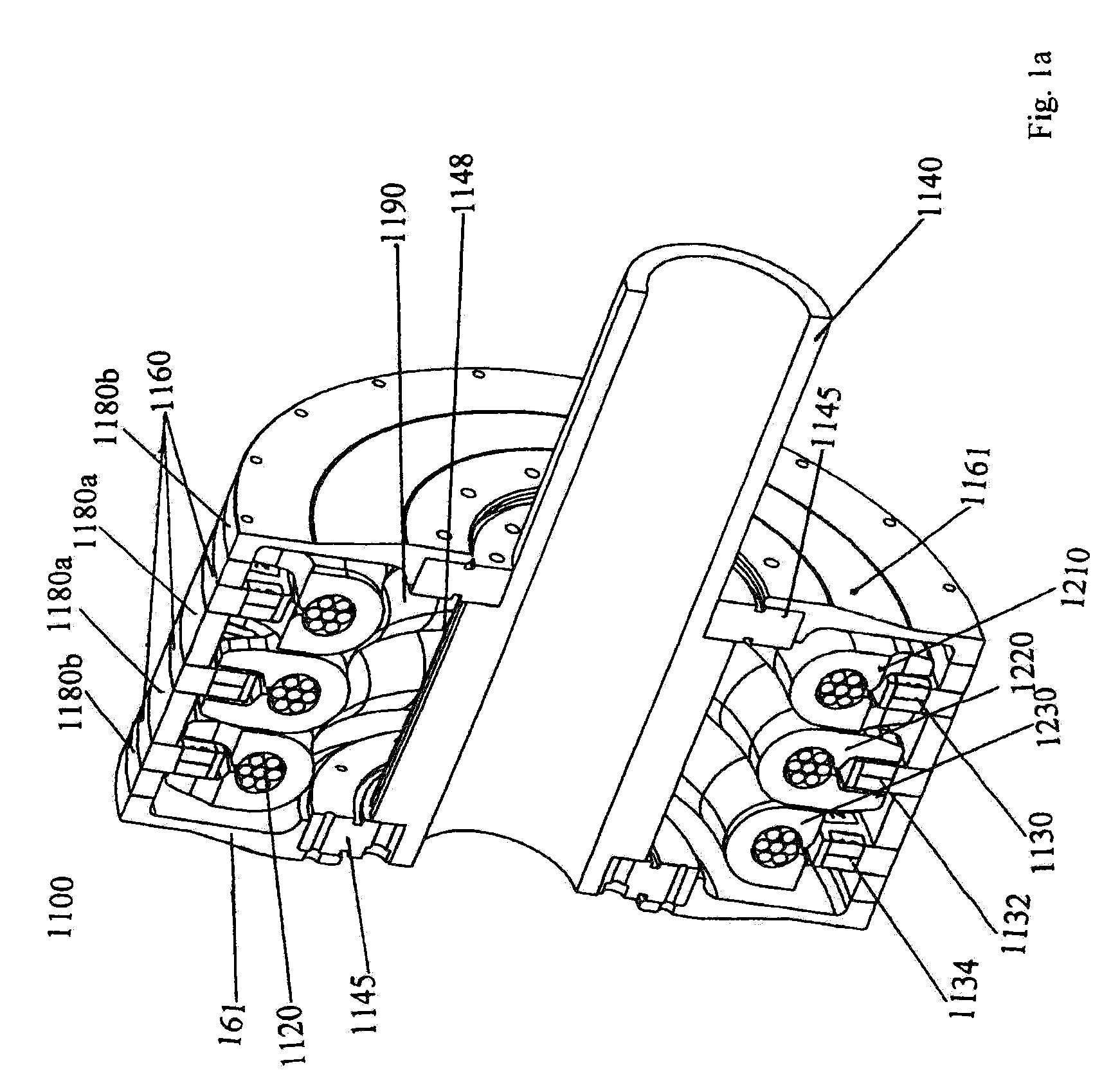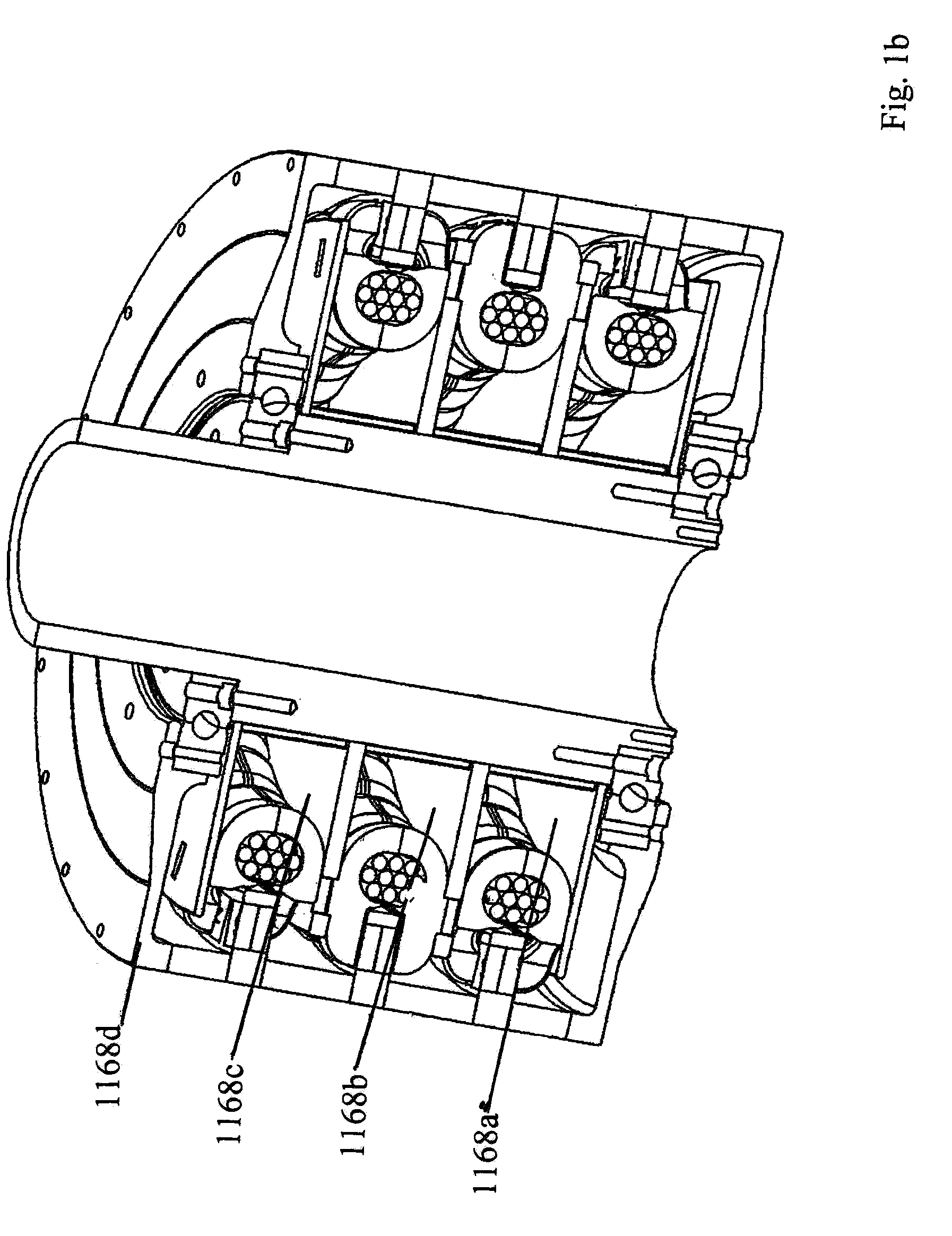High-efficiency wheel-motor utilizing molded magnetic flux channels with transverse-flux stator
a technology of transverse flux and motor, applied in the direction of electronic commutators, magnetic circuit shapes/forms/construction, stopping arrangements, etc., can solve the problems of reducing the maximum amount of torque produced, reducing the magnetic strength, and only blocking the eddy current in one plane, so as to reduce the hysteresis loss, improve torque and efficiency, and reduce interference
- Summary
- Abstract
- Description
- Claims
- Application Information
AI Technical Summary
Benefits of technology
Problems solved by technology
Method used
Image
Examples
Embodiment Construction
[0052]Before explaining the disclosed embodiments of the present invention in detail it is to be understood that the invention is not limited in its application to the details of the particular arrangements shown since the invention is capable of other embodiments. Also, the terminology used herein is for the purpose of description and not of limitation.
[0053]The following is a list of the reference numbers used in the drawings and the detailed specification to identify components:
[0054]
1100motor1120transverse winding1125channel1130permanent magnets1130apermanent magnets, phase A1130bpermanent magnets, phase B1130cpermanent magnets, phase C1135aair gap1135bair gap1140mounting shaft1145bearing1148splined surface 150Magnetic Flux Channels1160rotating disc1160arotating disc, phase A1160brotating disc, phase B1160crotating disc, phase C1161rotating end plate 162mounting shaft hole1164spacer 166hub1168aalignment plate, phase A1168balignment plate, phase B1168calignment plate, phase C1170...
PUM
 Login to View More
Login to View More Abstract
Description
Claims
Application Information
 Login to View More
Login to View More - R&D
- Intellectual Property
- Life Sciences
- Materials
- Tech Scout
- Unparalleled Data Quality
- Higher Quality Content
- 60% Fewer Hallucinations
Browse by: Latest US Patents, China's latest patents, Technical Efficacy Thesaurus, Application Domain, Technology Topic, Popular Technical Reports.
© 2025 PatSnap. All rights reserved.Legal|Privacy policy|Modern Slavery Act Transparency Statement|Sitemap|About US| Contact US: help@patsnap.com



